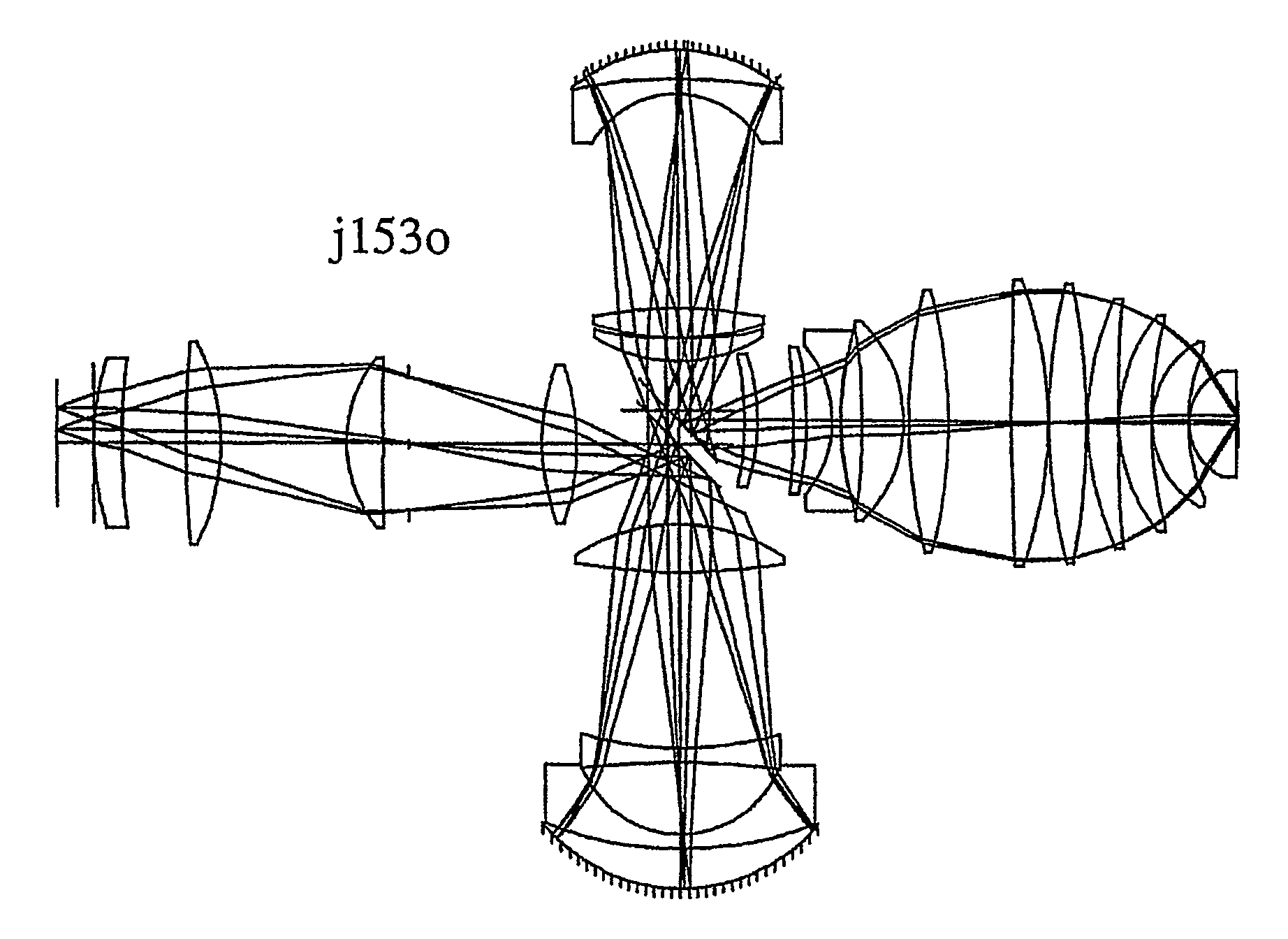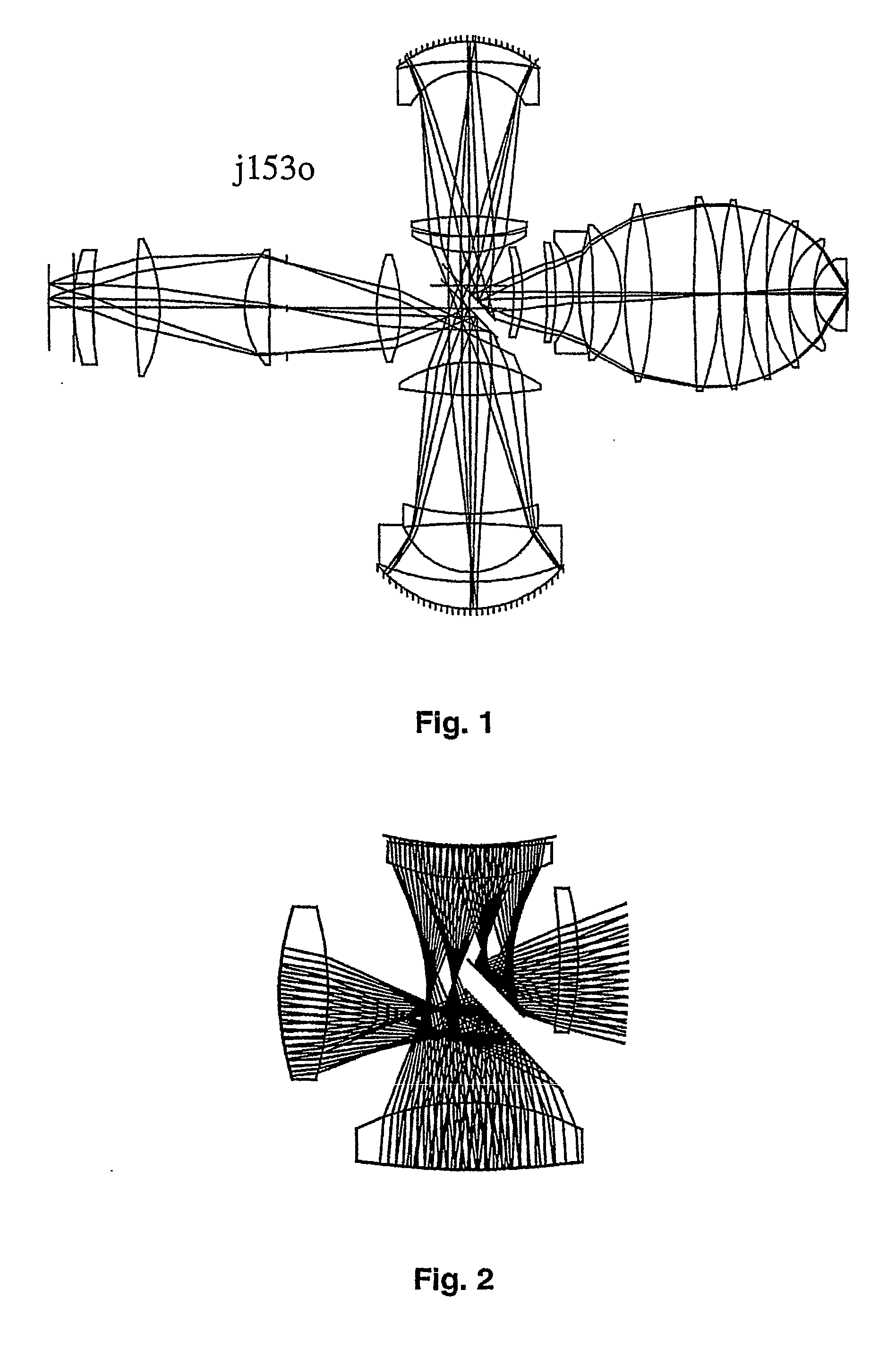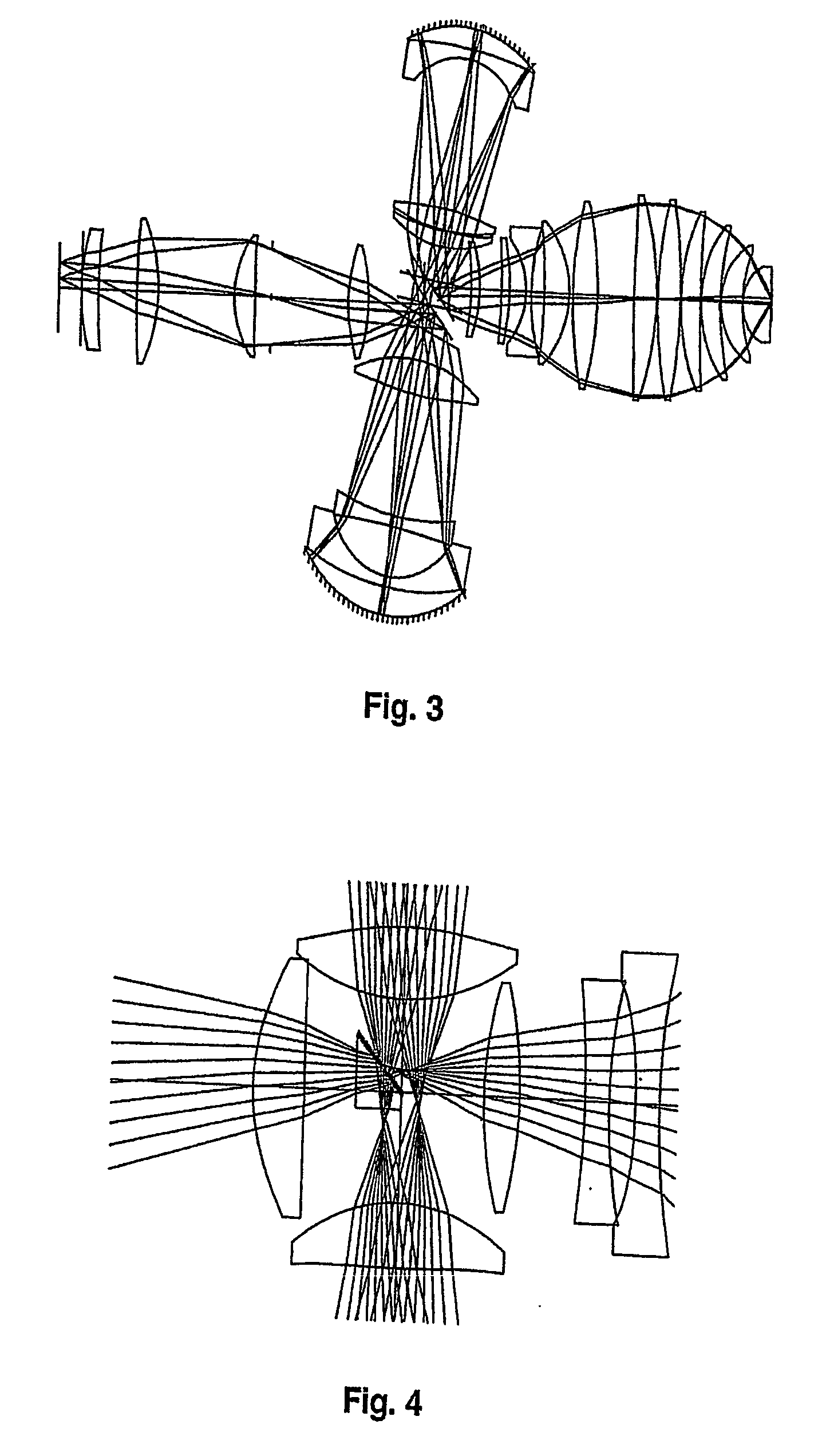Catadioptric Projection Objective
a catadioptric and objective technology, applied in the field of catadioptric projection objectives, can solve the problems of inability to complete achromatization, limited opportunity to correct chromatic errors, and substantially restricted refractive design forms, and achieve good image correction and favorable design.
- Summary
- Abstract
- Description
- Claims
- Application Information
AI Technical Summary
Benefits of technology
Problems solved by technology
Method used
Image
Examples
Embodiment Construction
[0045]FIG. 1 shows a first embodiment of a projection objective according to the invention. FIG. 2 shows a detailed view of the region of the beam deflection device (folding arrangement or folding device).
[0046]This system has the following parts in the light propagation direction: from the reticle (object plane (on the left in the figure) the light propagates through the first refractive part (R1) onto a folding mirror (F1), which is located in the vicinity of the first intermediate image (ZB1). The first folding mirror F1 reflects the light into a first (downward pointing) catadioptric part (HOA1). This part may be aligned essentially horizontally during operation. Such objective parts are also referred to below as a horizontal arm (HOA). This HOA1 projects the light onto a second intermediate image (ZB2) in the vicinity of the folding mirror (F1, F2). The light then passes through the other second catadioptric part (HOA2), on the top in the drawing, which in turn generates an int...
PUM
| Property | Measurement | Unit |
|---|---|---|
| wavelengths | aaaaa | aaaaa |
| wavelengths | aaaaa | aaaaa |
| wavelengths | aaaaa | aaaaa |
Abstract
Description
Claims
Application Information
 Login to View More
Login to View More - R&D
- Intellectual Property
- Life Sciences
- Materials
- Tech Scout
- Unparalleled Data Quality
- Higher Quality Content
- 60% Fewer Hallucinations
Browse by: Latest US Patents, China's latest patents, Technical Efficacy Thesaurus, Application Domain, Technology Topic, Popular Technical Reports.
© 2025 PatSnap. All rights reserved.Legal|Privacy policy|Modern Slavery Act Transparency Statement|Sitemap|About US| Contact US: help@patsnap.com



